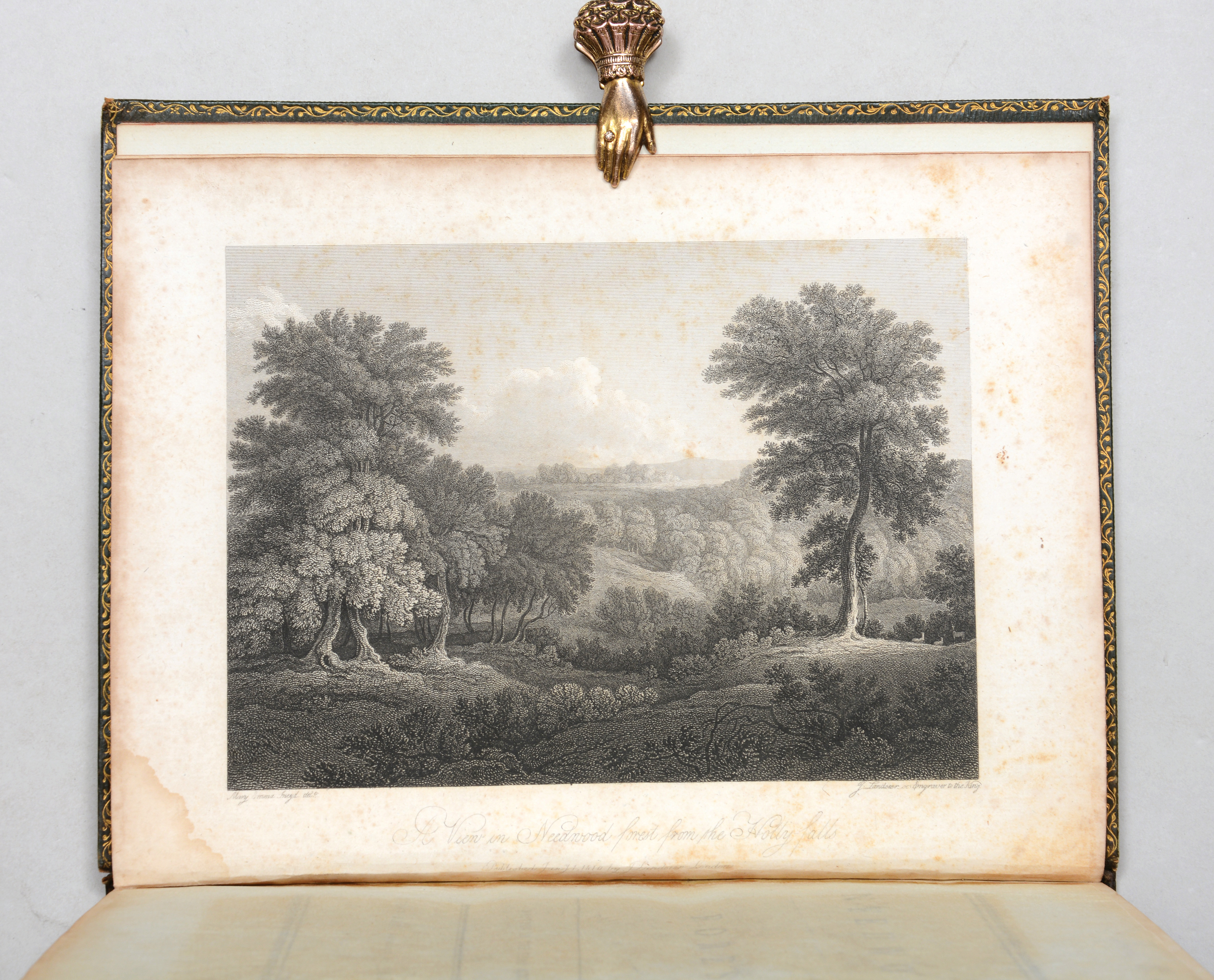A source of both knowledge and mystery, the forest is a terrain of possibility. The Scottish-American naturalist, and father of the American Nationals Parks, John Muir said: “The clearest way into the Universe is through a forest wilderness”. In the literary tradition, the forest has long served the function of being a landscape where the quotidian rules of day-to-day life are relaxed; an arena our characters enter into to be transformed, returning or passing through with fresh knowledge about the world and about themselves. The psychoanalyst Bruno Bettelheim’s said of the forest-as-symbol that it “signifies a psychoanalytic space – a place separated from everyday experience in which to be lost is to be found”, while academic Jack Zipes, speaking of the forest in the fairy tales of the Brothers Grimm, said that the forest makes enchantment possible, because the conventions of society do not apply there.
As such, the forest occupies a unique position in the human imagination, as a place where we can temporarily lay down the burden of our urbane and civilised personalities and let our wild selves come to the fore. Witness the contemporary popularity of ‘forest bathing’, championed as a cure for burnout and the stresses of urban life. With global deforestation a devastating contributor towards the climate emergency, and a consequence of accelerating capitalism (major western brands and banks continue to support deforesting enterprises such as drilling, logging, and mining through their investments) our real-world arboreal landscapes are fast disappearing. It is therefore more important than ever to consider the vital role forests play in the realm of the imagination, as well as their practical value. Here, we reflect on some of the most enchanting, thought-provoking, and transformative forests in the books on our shelves.
Walden Woods, Walden by Henry David Thoreau
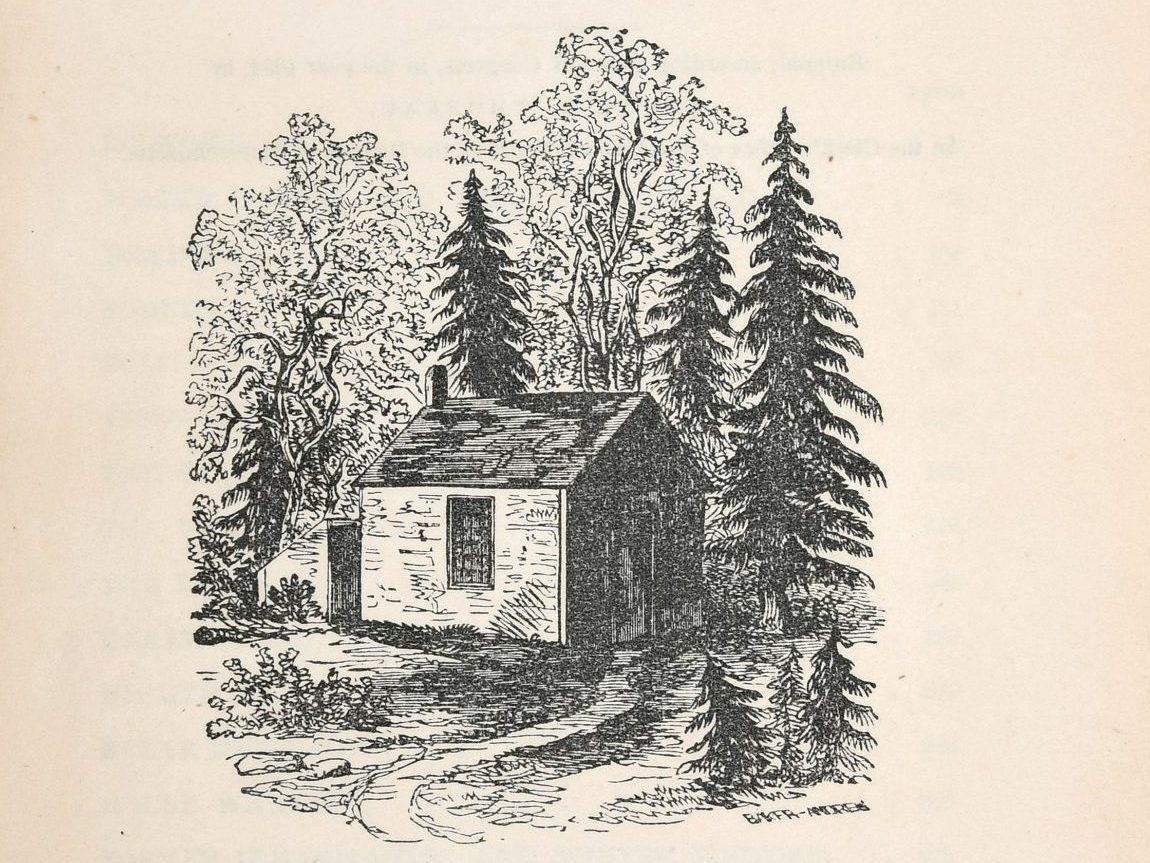
Title page of the first edition of Walden, 1854
“I went to the woods”, said Henry David Thoreau, “because I wished to live deliberately, to front only the essential facts of life, and see if I could not learn what it had to teach, and not, when I came to die, discover that I had not lived”. His masterpiece Walden is alternatively titled Life in the Woods, and is the essential back-to-nature text. It was in the woods by Walden Pond where Thoreau famously made his home, a spartan cabin where he chose to live simply and in harmony with the rhythms of the natural world. His experience, half social experiment, half voyage of personal discovery, was by his own account an attempt to escape from the effects of “over-civilization” and to search for the “savage delight” of wilderness. For Thoreau, the woods represented the opportunity not to conform to the lifestyles and preoccupations of his fellow man, but to locate a more vital and fundamental way of being: “If a man does not keep pace with his companions, perhaps it is because he hears a different drummer. Let him step to the music which he hears, however measured or far away”.
The Dark Wood, Inferno by Dante Alighieri
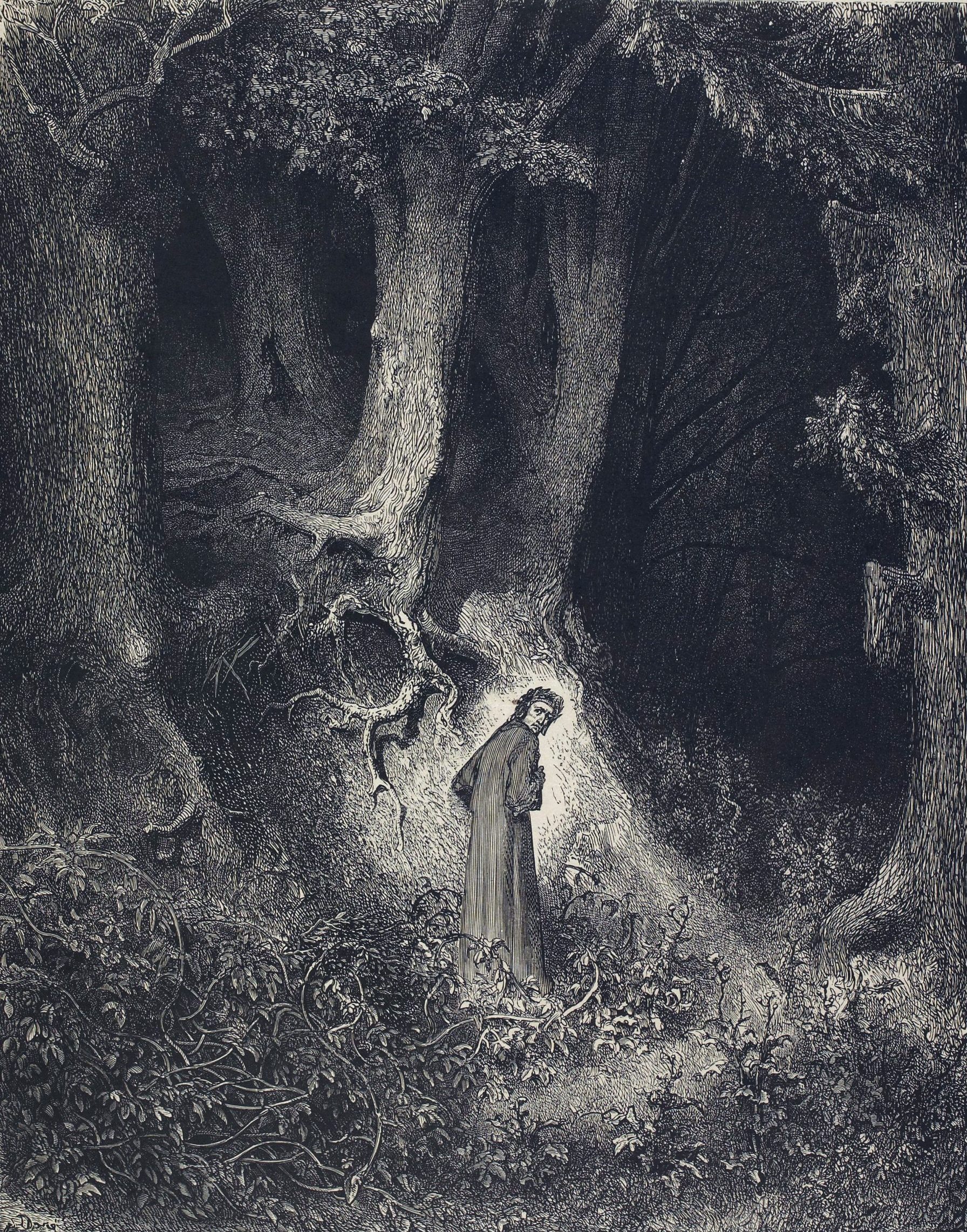
Dante Alighieri – La Divina Commedia Canto I, Gustave Doré
“In the middle of our life’s journey, I found myself in a dark wood” begins one of the most famous pieces of literature ever written, Dante’s Divine Comedy. It is the dark wood that heralds the very beginning of his journey into hell, where he will meet all manner of sinners; the place he must pass through before he reaches the gate into the underworld itself. The wood therefore functions, for Dante, as a liminal space, neither part of the structure of hell itself, nor part of the real and mundane world, it is a space Dante moves through to effect a transition from one plane to another. Dante’s state at the beginning of the Inferno is one of moral and spiritual disorientation, having lost the “straight way” or path of righteousness and salvation. In this way the forest represents for Dante uncertainty and disorientation but, as the first stage of his katabasis (the Greek term for a journey into the underworld) the promise of ultimate transformation and salvation is hinted at.
The Wood Between the Worlds, The Magician’s Nephew, C. S. Lewis

The Wood Between the Worlds illustration by Paule Baynes, The Magician’s Nephew, 1955.
As in Dante, the forest in Lewis’ Narnia is a portal between worlds. Most indelibly, it is a snowy forest into which Lucy emerges on first finding the entrance to Narnia behind the fur coats in the wardrobe: “’This must be a simply enormous wardrobe!’ thought Lucy, going still further in and pushing the soft folds of the coats aside to make room for her…Next moment she found that what was rubbing against her face and hands was no longer soft fur but something hard and rough and even prickly. ‘Why, it is just like branches of trees!’” However, it is the less well-known and more curious wood from Lewis’ 1955 book The Magician’s Nephew, the Narnia origin myth, that is perhaps the more arresting. The ‘wood between the worlds’ in a strange concept introduced when the protagonists of the story, Polly and Diggory, are tricked into using magic rings by Diggory’s morally ambiguous uncle Andrew. The rings transport them to the strange wood, where, between the trees, are a series of pools, each the gateway to a different world. The wood again represents a liminal or in-between space which functions as the vestibule to different worlds, and it is from this forest that Polly and Diggory find their way into Narnia for the first time.
The Hundred Acre Wood, Winnie the Pooh by A. A. Milne
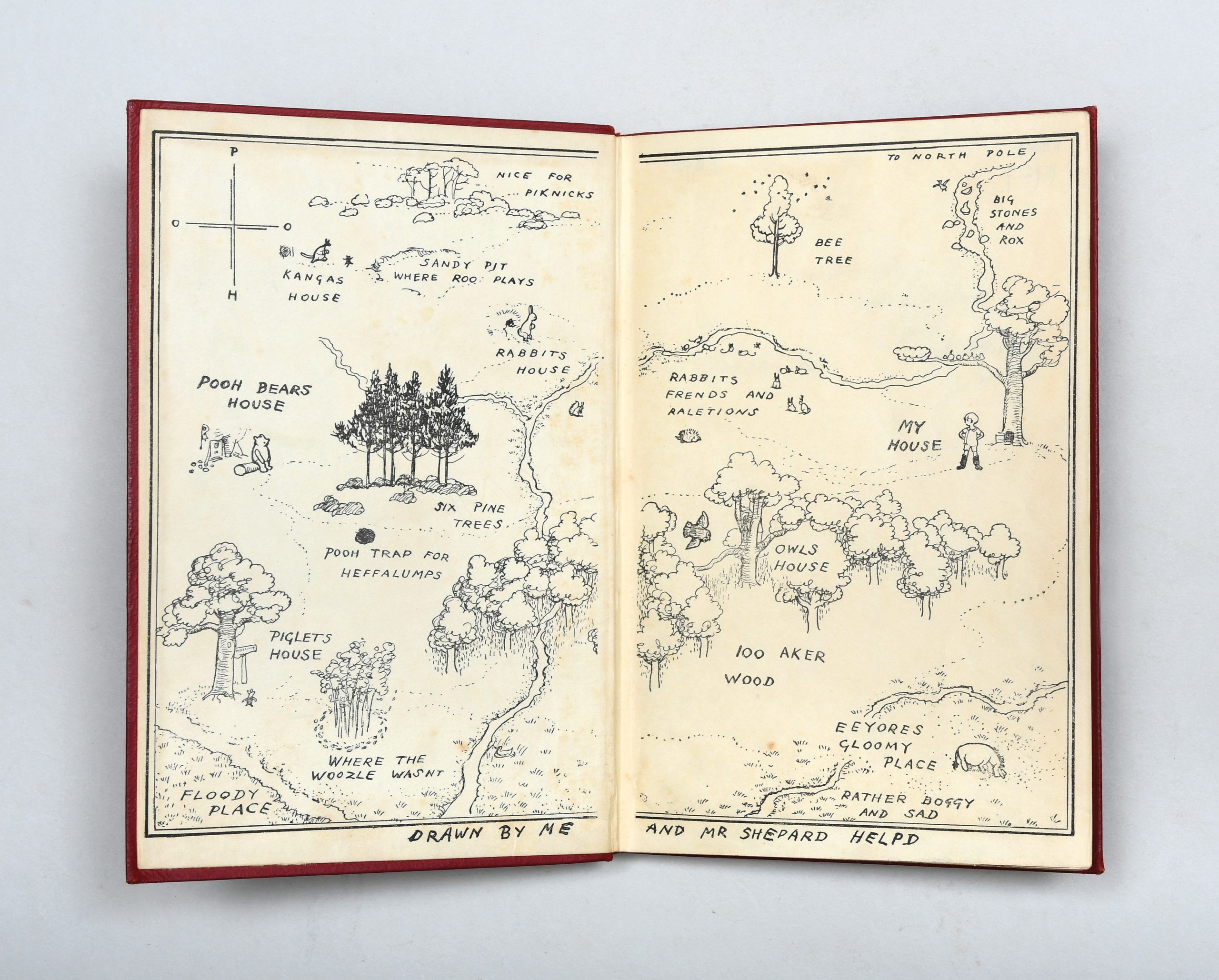
Map from Winnie-the-Pooh, illustrated by E. H. Shepard, 1926
The fictional setting for the adventures of Milne’s beloved characters is unusual in literature for being overlaid on a real and existing landscape, that of Ashdown Forest in East Sussex. Milne saw the potential for the (at that time) unspoilt forest on his doorstep to be a playground for the young imagination, and mapped out the landmarks of Pooh, Piglet, Eeyore, and Christopher Robin’s private kingdom based on real places that can still be visited, such as the ‘Pooh Bridge’ where the memorable game of Pooh Sticks takes place, or the ‘Enchanted Place’ where Pooh and Christopher Robin ultimately say goodbye. The forest in Milne’s book is a prelapsarian landscape, free from the stresses and sorrows of adult life, where “whatever happens to them on the way, in that enchanted place on the top of the forest, a little boy and his Bear will always be playing”.
Mirkwood, The Hobbit, J. R. R. Tolkien
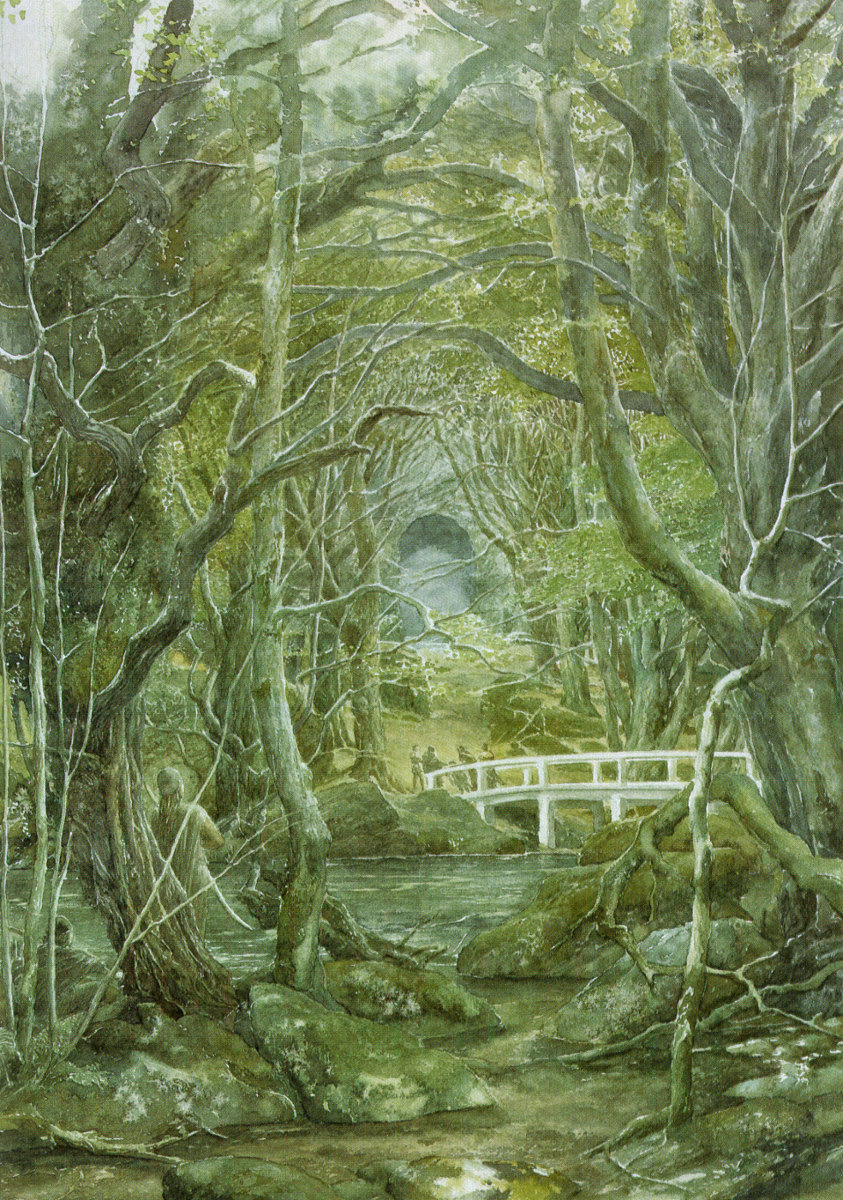
The Entrance to Thranduil’s Palace, Alan Lee
Forests play an important part in Tolkien’s tales of Middle Earth. What they hold in common is that they are often the places where the wildness and savagery of the old world has retreated; mysterious green hubs where the civilising influence of the sentient races holds less sway. The Old Forest which the hobbits travel through and encounter such misadventure in the early part of The Lord of the Rings, is the domain of Old Man Willow, the malevolent and ancient forest spirit, as well as the inscrutable and seemingly omniscient Tom Bombadil. Fangorn Forest is the domain of the Ents, the ancient treeherders who have congress with the primeval trees of the forest. Tolkien loved trees and viewed deforestation to make way for industry as one of the chief evils of the world.
Of particular interest in Tolkien’s forest settings is Mirkwood, in which a good portion of The Hobbit takes place. The sequence in which Bilbo and his dwarf companions become lost in Mirkwood displays a slight shift in tone with the rest of the novel, functioning almost as its own independent story which bears more in common with a classical quest narrative of Arthurian grail stories. Many of the essential elements of a courtly quest tale are present, as our heroes become lost in a bewildering and pathless forest, spot a mysterious deer, are afflicted with sleeping sickness by an enchanted stream, and come across a party of elves feasting and carousing, who scatter at the merest interruption. A lifelong student of myths, legends, and fairy tales, Tolkien was deliberately using the setting of the forest to send his characters on a transformative journey, from which they would emerge altered, ready to pursue the next stage of their adventure.
You can find first and special editions of these and other books featuring famous forests on our shelves.

